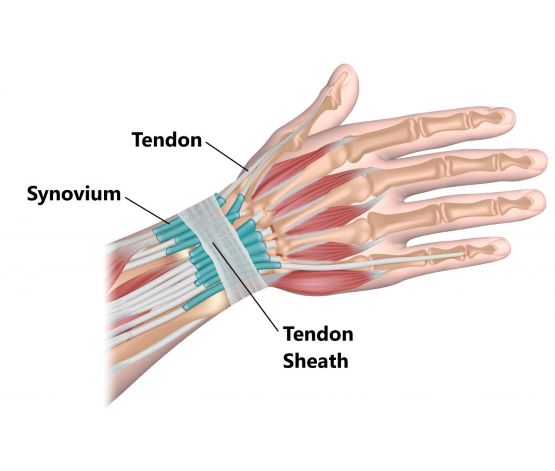
Author: Kunle Physiotherapist
De Quervain’sTenosynovitis
Although it sounds foreign and something you may have never heard of, chances are that you or somebody you know will develop De Quervain’s sometime in the future. But what exactly is it? De Quervain’s Tenosynovitis is an overuse injury affecting the tendons on the thumb side of your wrist. These tendons pass through a small tunnel created by your wrist bone and a broad ligamentous band running across the back of your wrist and over these tendons, roofing them in place. To prevent friction as the tendons move back and forth in this tunnel, the tendons have a protective coating at this junction called the tendon sheath. With activities requiring repetitive bending and straightening of the thumb as well as repetitive sideways bending of the wrist towards and away from your pinky, the protective tendon sheath as well as the ligamentous tunnel roof thickens and traps the tendons causing a lot of pain.(1)
Causes: In cases of De Quervain’s a process of tissue degeneration has been seen (2),but the actual cause of the problem is not completely known. Certain individuals are however more at risk of developing it. Ranging from desk workers, tradesmen such as carpenters, musicians who play instruments with their hands, golfers, childcare workers and new mums who repeatedly perform the aforementioned thumb and wrist movements in order to carry their child (3). The prevalence of this condition is likely to increase as handheld electronic devices particularly mobile phones which require repetitive thumb movements to operate have become ubiquitous. Therefore, as previously mentioned, chances are that you or someone you know may develop this in the future.
Things to look out for: Common signs and symptoms to look out for include a slow onset of pain and tenderness on the thumb side of the wrist, reduced movement of the thumb, wrist pain with grasping, wringing and twisting hand movements such as opening a jar. Aching, burning or pulling at the thumb side of the wrist may also occur as well as a feeling of weakness in the hand (4).
What can be done: Although De Quervain’s can be challenging to treat, conservatively several treatment options have proven effective. The best results have been achieved with a combination of treatments that include manual therapy (soft tissue releases & joint mobilisations), thumb and wrist strengthening exercises, appropriate thumb/wrist splinting, corticosteroid injections and activity modifications (2)(5).So should you begin to notice any signs or symptom of De’Quervain’s tenosynovitis, waste no time and book in a session with one of our physiotherapists right away!
References: (1) Satteson E, Tannan SC. De Quervain Tenosynovitis. [Updated 2022 Feb 22]. In: StatPearls [Internet]. Treasure Island (FL): StatPearls Publishing; 2022 Jan-. Available from: https://www.ncbi.nlm.nih.gov/books/NBK442005/(2) Cavaleri R, Schabrun SM, Te M, Chipchase LS. Hand therapy versus corticosteroid injections in the treatment of de Quervain’s disease: A systematic review and meta-analysis. J Hand Ther. 2016 Jan-Mar;29(1):3-11. doi: 10.1016/j.jht.2015.10.004. Epub 2015 Nov 6. PMID: 26705671.(3) Goel R, Abzug JM. de Quervain’s tenosynovitis: a review of the rehabilitative options. Hand (N Y). 2015 Mar;10(1):1-5. doi: 10.1007/s11552-014-9649-3. PMID: 25762881; PMCID: PMC4349843.(4) Walker MJ. Manual physical therapy examination and intervention of a patient with radial wrist pain: a case report. Journal of orthopaedic & sports physical therapy. 2004 Dec;34(12):761-9.(5) Rabin A, Israeli T, Kozol Z. Physiotherapy Management of People Diagnosed with de Quervain’s Disease: A Case Series. Physiother Can. 2015 Aug;67(3):263-7. doi: 10.3138/ptc.2014-47. PMID: 26839455; PMCID: PMC4594817.
